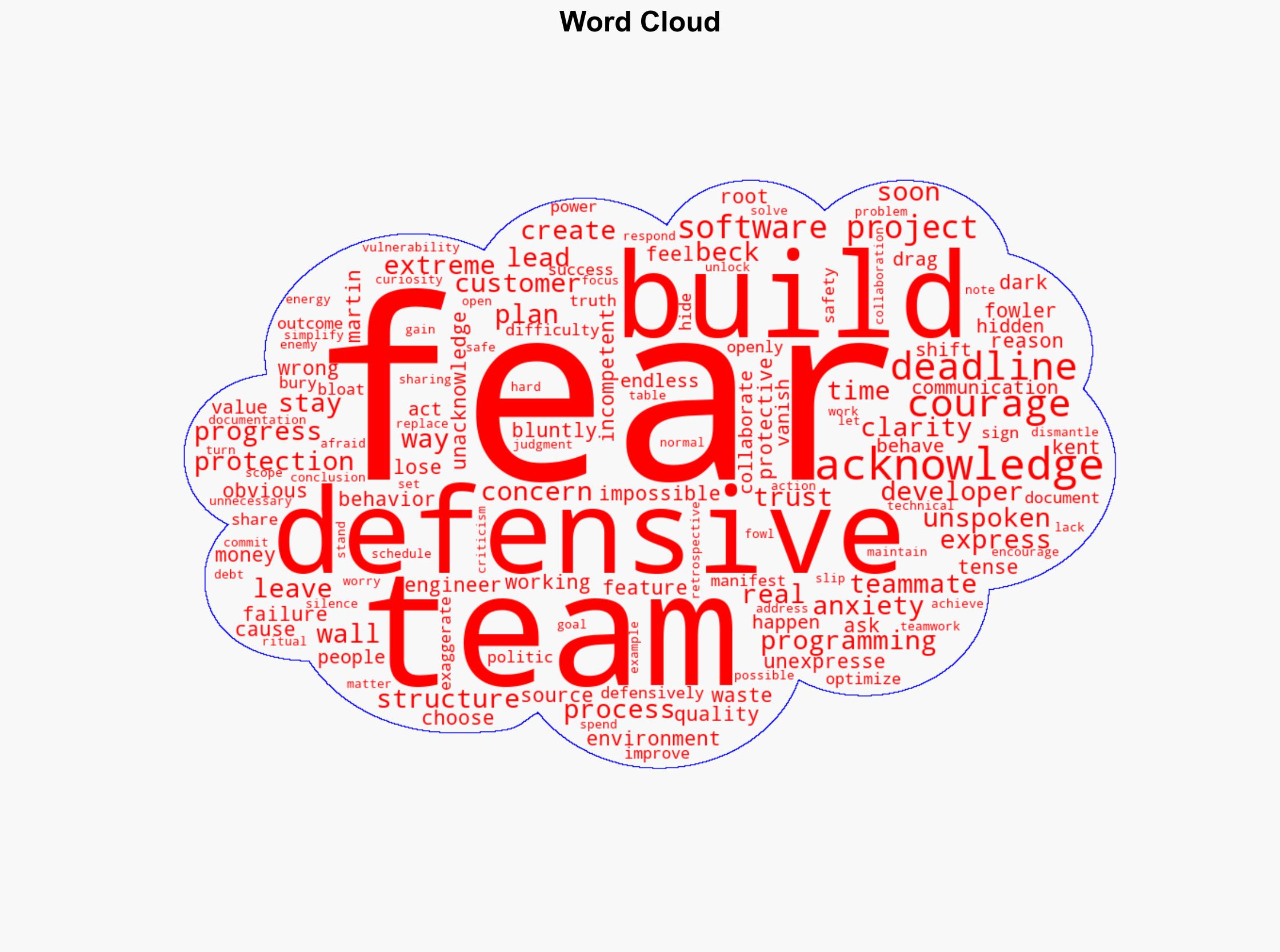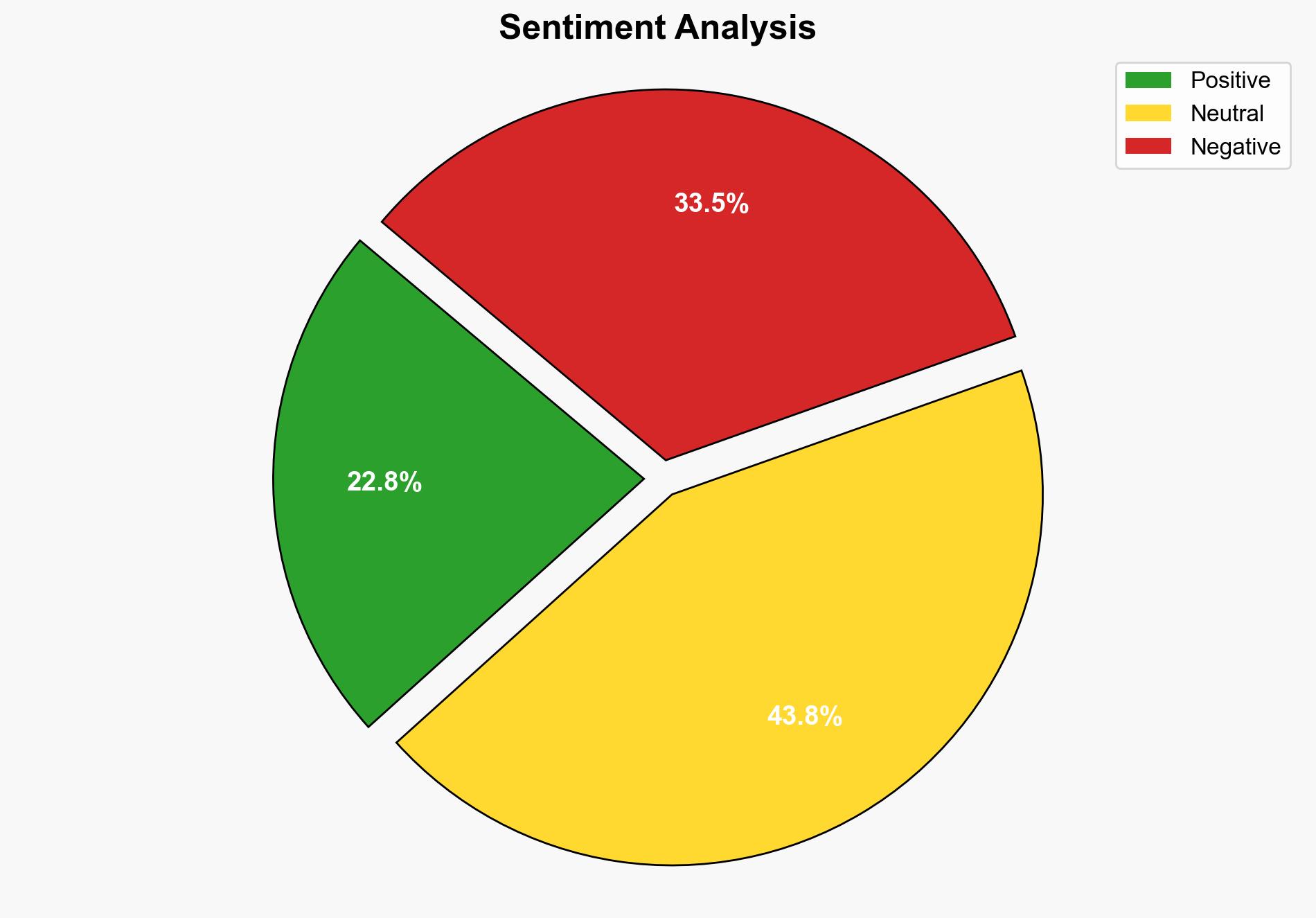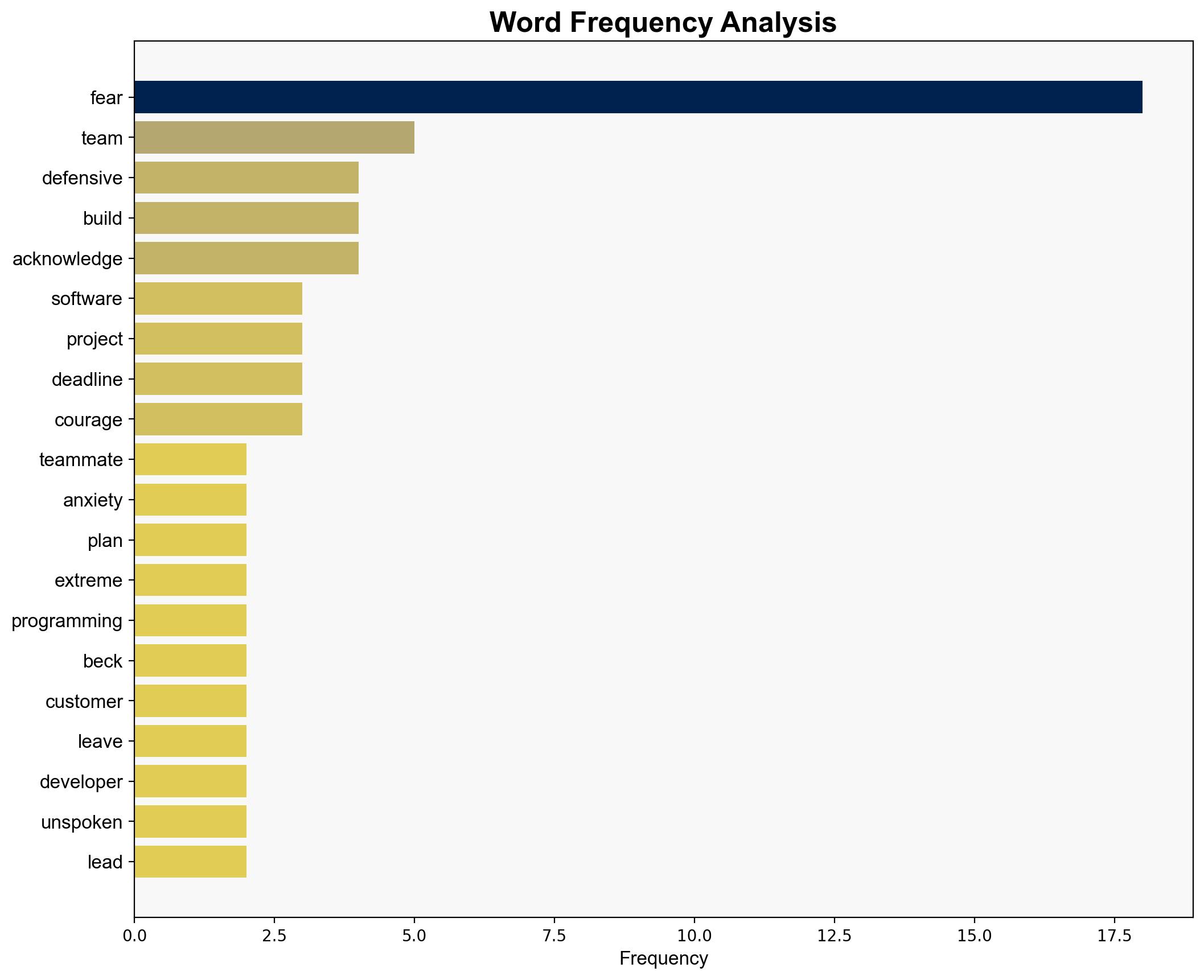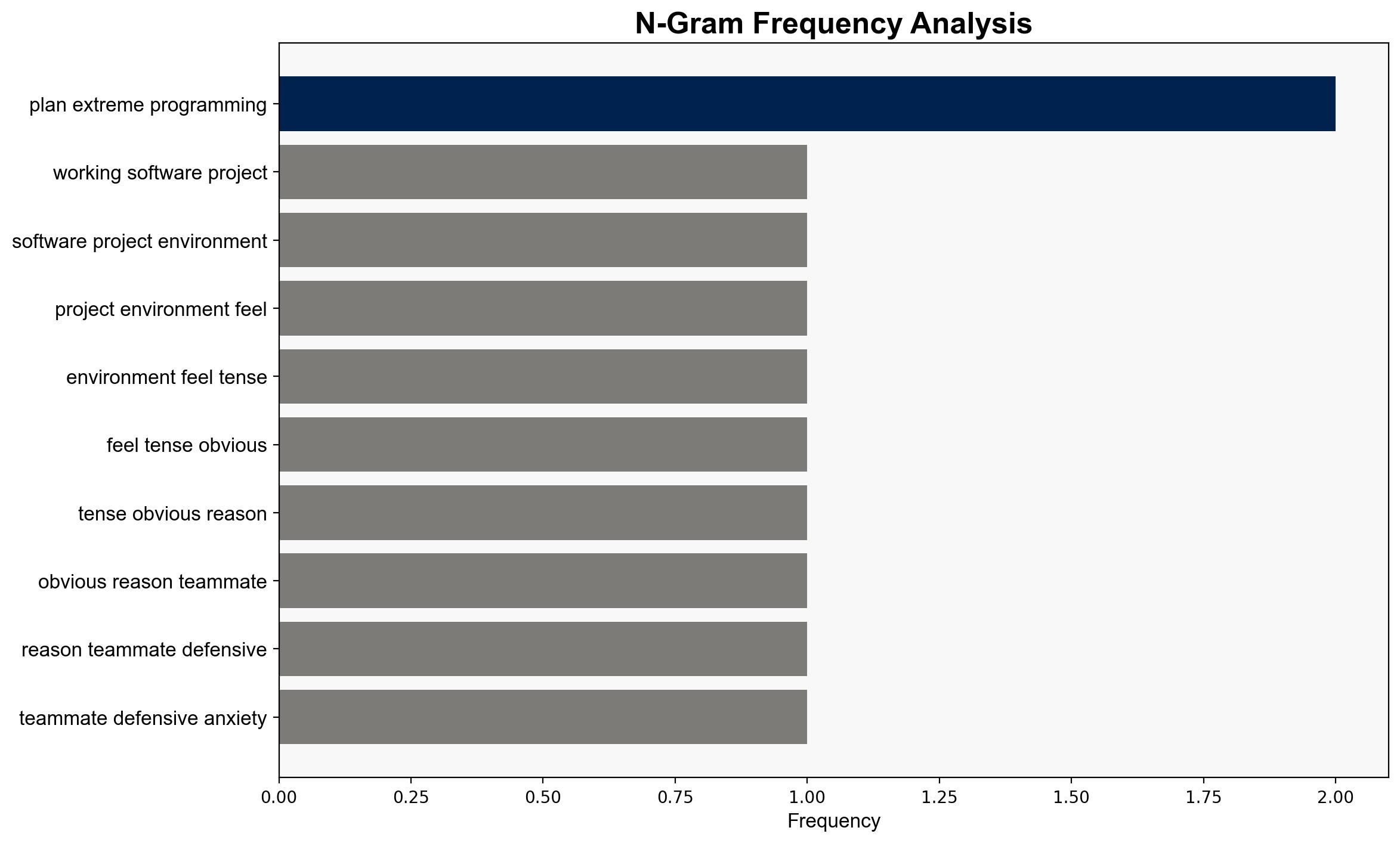Fear isnt the enemy in teamwork silence is – Thoughtbot.com
Published on: 2025-10-06
Intelligence Report: Fear isn’t the enemy in teamwork, silence is – Thoughtbot.com
1. BLUF (Bottom Line Up Front)
The analysis suggests that unexpressed fear within software project teams leads to defensive behaviors and project inefficiencies. The hypothesis that open communication about fears enhances team performance is better supported. Confidence level: Moderate. Recommended action: Implement structured communication practices to encourage expression of concerns.
2. Competing Hypotheses
1. **Hypothesis A**: Unexpressed fear is the primary cause of defensive behaviors and inefficiencies in software project teams. Addressing these fears openly will lead to improved collaboration and project outcomes.
2. **Hypothesis B**: Defensive behaviors and inefficiencies in software project teams are primarily due to external pressures such as unrealistic deadlines and resource constraints, rather than unexpressed fear. Addressing these external factors will lead to better outcomes.
Using the Analysis of Competing Hypotheses (ACH) 2.0, Hypothesis A is better supported. The source emphasizes the role of unacknowledged fear in creating protective behaviors, suggesting that open communication can dismantle these barriers.
3. Key Assumptions and Red Flags
– **Assumptions**: Hypothesis A assumes that team members are willing and able to express fears once a safe environment is established. Hypothesis B assumes that external pressures are the main drivers of inefficiencies.
– **Red Flags**: Lack of empirical data linking fear expression directly to improved outcomes. Potential bias in assuming that all team members will respond positively to open communication.
– **Blind Spots**: The analysis may overlook cultural or individual differences in expressing fears.
4. Implications and Strategic Risks
– **Implications**: If Hypothesis A is correct, fostering open communication could lead to more innovative and efficient project outcomes. Conversely, if Hypothesis B holds, focusing solely on internal communication may not address underlying issues.
– **Strategic Risks**: Misdiagnosing the root cause of inefficiencies could lead to wasted resources and persistent project failures. Psychological safety must be balanced with addressing external pressures.
5. Recommendations and Outlook
- Implement regular team retrospectives to encourage open discussion of fears and concerns.
- Develop training programs to enhance communication skills and emotional intelligence.
- Scenario Projections:
- **Best Case**: Teams embrace open communication, leading to innovative solutions and timely project completion.
- **Worst Case**: Focus on internal fears without addressing external pressures results in continued project delays.
- **Most Likely**: Incremental improvements in team dynamics as communication practices evolve.
6. Key Individuals and Entities
– Kent Beck
– Martin Fowler
7. Thematic Tags
team dynamics, communication strategies, project management, software development




